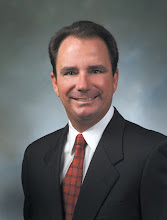The long awaited 2008 Yukon Hybrid has finally arrived at the GM Giant for you to test drive. Once you do, I am certain many of you will want to order one. Initial production is pegged at about 10 percent of capacity. As demand is evaluated, GM will increase or decrease that mix between conventional and Hybrid. After driving the vehicle, I am certain it will be a hit and production will be increased.
Driving the Yukon Hybrid at slow speeds around my neighborhood was like driving an oversized golf cart. The electric engine operated this big 8 passenger truck with only the quiet whine of the electric engine and the noise of the tires popping over the macadam road surface can be heard. A more aggressive acceleration from a stop sign resulted in the engine kicking in, then the hybrid system with the engine going into 4 cylinder mode. Were it not for the display on the dash, I would not have known any of the changes in the power mode. The only time you notice a change is when you slow down and the engine cuts off, leaving you 100% on battery power. Then the only reason you know is that it gets REAL QUIET.
The hybrid version of the Yukon and Tahoe delivers up to a 50% increase in fuel economy over their standard non-hybrid version. GM announced an EPA estimated 21 mpg city and 22 mpg highway for the 2 wheel drive hybrid Tahoe and Yukon models. That matches Toyota Camry’s 4 cylinder model’s EPA estimated 21 mpg city and beats the 6 cylinder model by 2 mpg. All of this is accomplished without any compromise in power thanks to the world class dual mode hybrid technology. It is important to note that these estimates are using the EPA’s new, more conservative, “real world driving” ratings.
America has had a long love affair with the full size SUV. That relationship has been challenged by high fuel prices. Now you will be able to get the benefits of the full size Tahoe and Yukon with the mileage of a mid size sedan. Did I mention power? These hybrid family movers boast a 6.0 liter V8, delivering 332 horse power and 367 pounds-feet of torque.
The dual mode hybrid system allows the Tahoe and Yukon to run up to 32 mph on electricity alone. After that speed the trucks either run on gasoline alone or a combination of gasoline and electricity. GM’s fuel management system will deactivate cylinders at highway speeds under low load, increasing the fuel efficiency. What is really neat about this system is you don’t even know it is happening, and it operates flawlessly, unlike the old 2-4-8 system of the early 80’s.
GM is also planning to use the two mode system in its Silverado and Sierra pickups. GM’s two mode system can be re-sized to work on smaller mid sized vehicles, and I am told they are working on bringing out hybrid models of other GM vehicles. The nice thing about the two mode system is that it can be adapted for use on smaller vehicles, unlike Toyota’s hybrid system that only works well on smaller vehicles.
GM continues to invest heavily in alternative fuel technology. They offer the most E85 capable vehicles in the world that run on a fuel mixture of 85% ethanol, usually from corn, and 15% gasoline. The new Chevy Volt plug in electric vehicle will run entirely on electricity, with gasoline only being used to run a generator when trips exceed 45 miles. GM also has a fleet of Hydrogen Powered Equinox SUV’s, where the only emission is water vapor, running America’s roads.
I invite you to come test drive the new Yukon Hybrid and see for yourself how saving on fuel can be accomplished without a compromise on size comfort and power. For more information on this and other GM products, visit us online at
www.gmgiant.com.


